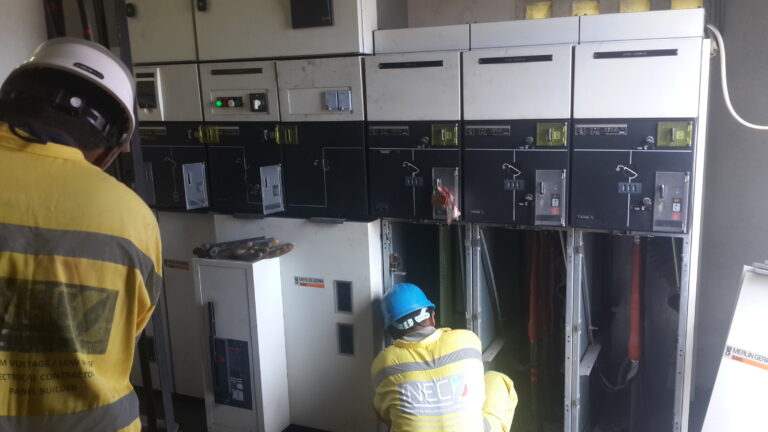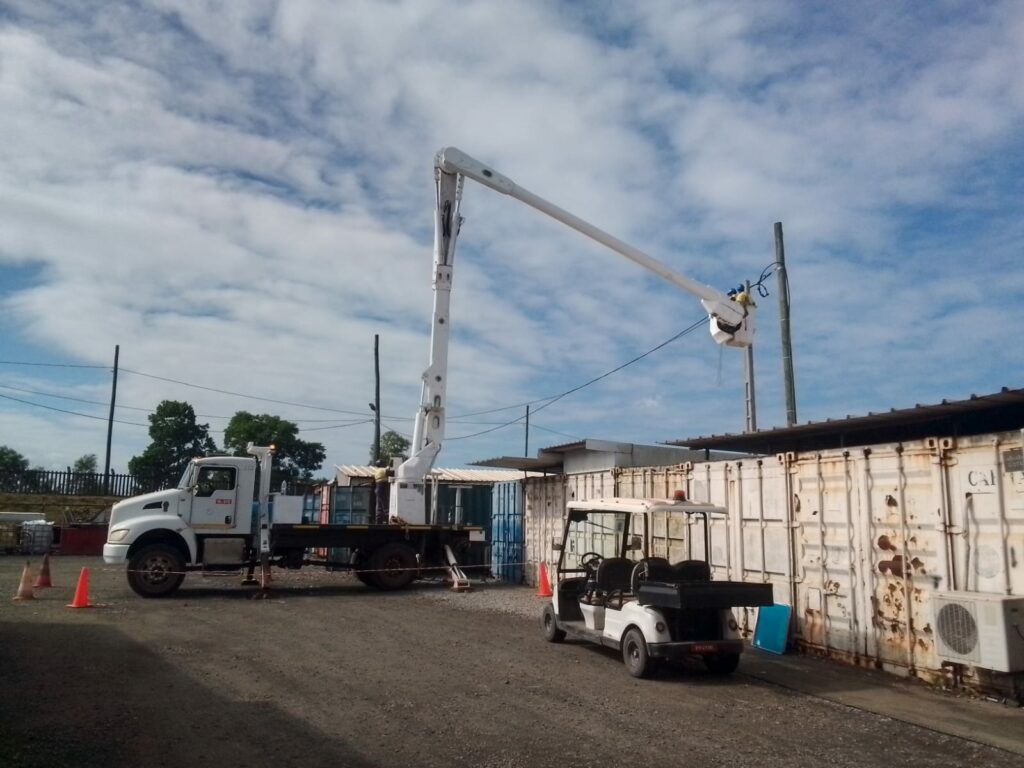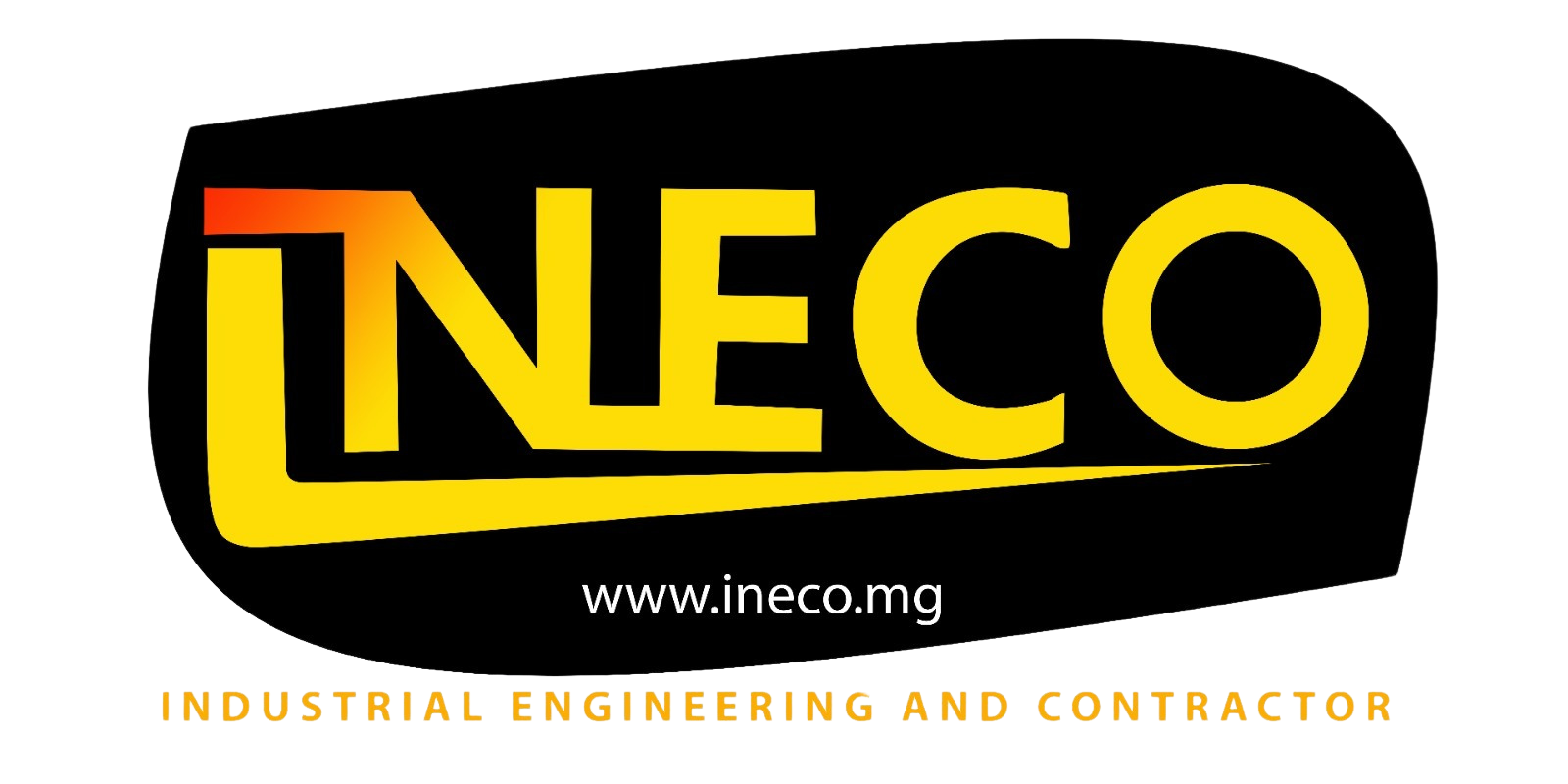Getting electricity from production to consumption relies on a complex network of high-voltage lines, transformers, sensors and storage units. With the rise of renewable energies and the increasing digitalization of the sector, energy infrastructures must evolve to meet the demands of performance, safety and sustainability. INECO is positioning itself as a strategic partner in this transformation, offering advanced technical solutions for electrical power distribution and transmission, adapted to the today’s and tomorrow’s challenges.
Understanding of electrical power transmission and distribution
Definition and role of power transmission
Electricity transmission refers to the transport of the energy over long distances between production sites (thermal, hydraulic or renewable power plants) and consumption centers.
Transmission is mainly via high or very high voltage (HV/VHV) lines, to reduce energy losses. It forms the backbone of the national electricity system.
Definition and role of electrical power distribution
Distribution comes after transmission: electricity is transformed into medium or low voltage in transformer stations, then sent to end users (homes, industry, services). Efficient distribution of electrical energy is essential to guarantee the quality of the power supply and avoid untimely power cuts.
Key players in the electricity network
The electricity supply chain mobilizes several categories of players:
- Electricity producers: thermal, hydroelectric, solar and wind power plants, etc.
- Transmission system operators (TSOs), who transport electricity over long distances.
- Distribution system operators (DSOs), responsible for distribution to end consumers.
- Energy suppliers, companies that sell electricity to consumers and professionals.
- Regulators authorities, responsible for ensuring network balance and conformity.

The challenges of energy distribution
Power system reliability and continuity
A stable, continuously available network is essential to the smooth running of modern society. A simple power cut can result in major economic losses for industry.
The example of the 2006 European blackout, which affected over 15 million households, demonstrates the crucial importance of ensuring the reliability of the entire power supply chain.
Safety and protection of electrical infrastructures
Networks face multiple threats: cyber-attacks, climatic hazards, malicious acts.
To limit these risks, operators are investing in cyber-security, redundant installations and real-time monitoring.
Integrating renewable energies into power networks
The integration of wind, solar and hydro power is revolutionizing the structure of traditional grids. Their intermittent production requires sophisticated balancing mechanisms and storage capacities.
In France, renewable energies have already been accounted for 30% of production in 2023.
Voltage stability and regulation
Maintaining a constant voltage is fundamental to the safety of electrical equipment. Peak loads, renewable energy injections and load imbalances require advanced tools such as smart transformers and dynamic voltage regulators.
Solutions for optimizing energy transmission and distribution
Modernizing energy infrastructures
Power grids inherited from the 20th century need to be thoroughly modernized to meet new challenges in electrical power transmission and distribution: rising demand, integration of renewable energies, resilience requirements.
This involves replacing obsolete equipment, reinforcing lines and adopting more efficient materials.
In Germany, the “SuedLink” project involves the installation of 700 km of high-voltage direct current (HVDC) lines to improve the transmission of wind-generated electricity from the north to industrial areas in the south. This type of infrastructure reduces energy losses and enhances grid stability.
Discover INECO’s expertise through projects in Electrical power Transmission and Distribution
Automation and smart network management
Automation plays a key role in modernizing power grids. Indeed, smart grids enable dynamic energy management thanks to automation, IoT sensors and SCADA systems.
This makes it possible to anticipate outages, reduce losses and adapt supply to demand. These solutions also contribute to balancing production and consumption in real time.
Innovation focus: The integration of IoT sensors and SCADA (Supervisory Control And Data Acquisition) systems enables remote monitoring and control of the power grid, improving infrastructure efficiency and safety.
Energy storage and efficiency improvement
Storage is a key lever for smoothing out renewable production and guaranteeing energy availability. Industrial batteries, pumped-storage energy transfer stations (PETS), super-capacitors and green hydrogen are just some of the solutions available.
Tesla’s Gigafactory in Nevada illustrates the impact of these large-scale technologies.

Real-time monitoring and predictive maintenance
Data analysis and artificial intelligence enable us to anticipate electrical component failures, thus reducing unplanned downtime.
In France, RTE (the French electricity transmission network operator) uses drones equipped with thermal sensors to inspect high-voltage lines and detect areas at risk before a failure occurs.
Key technologies for an efficient power network
The evolution of energy infrastructures relies on the integration of advanced technologies to improve the stability, safety and efficiency of power grids.
The development of smart grids, automation and high-voltage transmission solutions is helping to optimize energy management while promoting the integration of renewable energies.
Smart electrical grids and energy management
Smart grids use energy information technologies to adjust supply to demand in real time. They improve resilience, reduce losses and facilitate the integration of renewable energies.
In Spain, grid operator Red Eléctrica has set up a real-time management system to stabilize consumption by efficiently integrating solar and wind power into the national grid.
Load analysis and power system planning
Energy infrastructure planning is a strategic issue for ensuring a reliable and scalable network. Load analyses enable us to anticipate consumption peaks and adjust generation and transmission capacities accordingly.
Tools and techniques for effective planning :
- Energy simulation softwares to assess future needs and optimize the layout of new infrastructures.
- Energy flow modeling systems for predictive load management to avoid congestion.
- Intelligent sensors to continuously monitor network loads and adjust power distribution according to demand.
Canadian grid operator Hydro-Québec uses advanced load analysis algorithms to adjust power distribution according to weather forecasts, thus avoiding overloads during cold snaps.
Protecting and securing transmission systems
With cyber attacks and climate risks on the rise, protecting electrical infrastructures has become an absolute priority. Advanced solutions are deployed to secure networks against intrusions and extreme events.
Protection and security solutions :
- Advanced cybersecurity systems: protection of control stations and SCADA systems against cyberthreats.
- Surge protection devices: prevent damage caused by voltage fluctuations and storms.
- Predictive maintenance and real-time monitoring: proactive detection of anomalies before they cause major breakdowns.
In the USA, Duke Energy has set up a cyber-attack detection system using artificial intelligence to analyze intrusion attempts in real time and reinforce the security of critical infrastructures.

Innovations in high-voltage transmission
Long-distance power transmission relies on increasingly efficient high-voltage transmission technologies (HVDC and HVAC). These innovations reduce energy losses and improve infrastructure reliability.
High-voltage technologies .
- HVDC (High Voltage Direct Current): enables electricity to be transmitted over very long distances with minimal losses.
- FACTS (Flexible AC Transmission Systems): improves network stability by optimizing power flows.
- Advanced power converters: facilitate the integration of renewable energies into existing grids.
In China, the Changji-Guquan UHVDC line transmits 12 GW of electricity over more than 3,000 km, reducing losses to less than 5%, compared with 10-15% with conventional technologies.
Why choose INECO for your energy projects?
In a constantly evolving industry, choosing the right energy partner is crucial to guaranteeing the reliability, performance and optimization of your electrical infrastructures.
INECO stands out for its expertise and innovative approach, responding to the challenges of the energy transition and the requirements of modern industries.
Expertise and customized support
With 14 years’ experience in electrical engineering and energy optimization, INECO offers customized support to meet the specific needs of each project.
- In-depth assessment of your infrastructure and appropriate recommendations.
- Technical studies and advanced simulations to optimize energy management.
- Ongoing technical support to guarantee the longevity of your installations.
Innovative solutions tailored to industrial needs
INECO relies on the latest technological advances to design reliable, intelligent and scalable energy infrastructures.
- Advanced automation for optimized energy management.
- Integration of storage solutions to improve network resilience.
- Predictive maintenance based on artificial intelligence to anticipate outages.
Our commitment to efficiency and sustainability
In response to environmental challenges, INECO integrates eco-responsible solutions for a more sustainable energy network.
- Optimizing energy consumption to reduce carbon footprint.
- Renewable energies for a greener power supply.
- Compliance with international standards to guarantee safety and performance.
Conclusion
Optimizing the transmission and distribution of electrical energy is a major challenge if we are to guarantee a reliable, high-performance network adapted to the new energy challenges. INECO can help you modernize your infrastructure with its expertise and innovative solutions.
Find out how to improve the reliability and efficiency of your energy infrastructures.
Frequently asked questions (FAQ)
What is the average cost of a power grid modernization project?
The cost depends heavily on the size of the network, voltage level, integrated technologies (automation, storage, intelligent sensors), and project objectives (reliability, efficiency, integration of renewable energies).
As an indication, a regional modernization project can cost from thousands to several million euros.
How can an energy modernization project be financed?
Several options are available:
- National funds for energy transition
- Subsidies linked to renewable energies or energy efficiency
- Public-private partnerships (PPP)
- Financing via energy performance contracts (EPC)
Do I need a permit to install or modernize a power grid?
Yes, any project involving the transmission or distribution of energy is subject to strict regulations. This may include:
- Administrative authorizations (town planning, environment authorities)
- Declarations or connection requests to network operators
- Compliance with international electrical standards (e.g. IEC, NF C13-100)
INECO keeps a close watch on regulations and can manage the necessary administrative procedures on behalf of its customers.
What is the average lifespan of an electrical infrastructure?
It depends on the type of infrastructure:
- HV/HV lines: between 30 and 50 years
- Transformers: between 20 and 40 years
- Digital equipment (sensors, PLCs): 10 to 15 years
Good predictive maintenance can extend the life of these components and anticipate critical replacements.
What's the difference between an urban and a rural electrical network?
In urban areas, the network is often underground, denser and more complex to manage.
In rural areas: lines are often overhead, longer, and infrastructures may be more exposed to the vagaries of the weather.
Requirements for modernization, automation and monitoring are therefore very different depending on the geographical context. INECO offers customized solutions for every environment.


